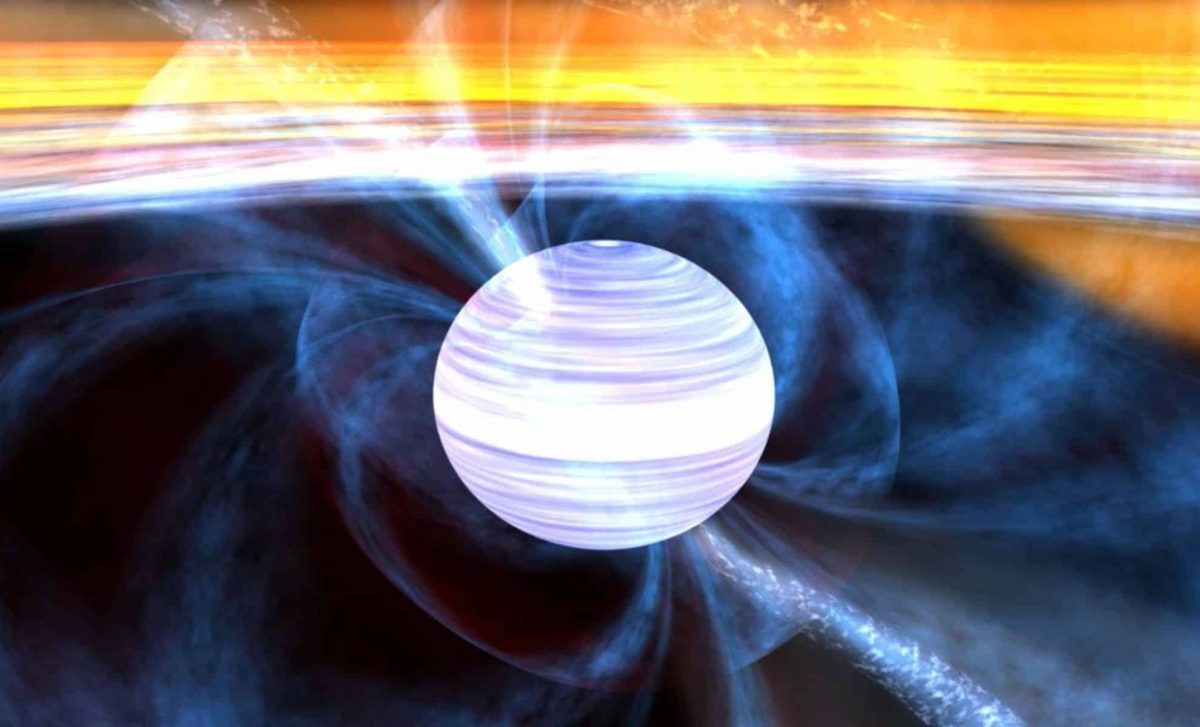4U 1820-30: The Milky Way’s Fastest-Spinning Neutron Star
Scientists have discovered a remarkable astronomical phenomenon in the Milky Way—a neutron star that spins faster than any other neutron star ever recorded to date. Known as 4U 1820-30, this neutron star has stunned researchers with its spin rate of 716 times per second. Situated in the dense globular cluster NGC 6624 approximately 26,000 light-years away from Earth.
By using NASA’s X-ray telescope Neutron Star Interior Composition Explorer, astronomers were able to observe a neutron star located near the center of the Milky Way Galaxy, 26 light-years away.
What Are Neutron Stars and Why Do They Spin So Fast?
Neutron stars are essentially the remains of gigantic stars. After these enormous stars run out of hydrogen to fuse into helium, the core of the star collapses, resulting in a supernova explosion that only leaves the star’s core, an object only a few miles across, yet containing a mass comparable to the sun. The result of the compression of such immense mass into such a small object culminates in the stellar body’s extreme properties, one of which being their fast rate of spin. The reason for this phenomenon is due to the conservation of angular momentum, allowing small objects to increase their rate of spin. A popular analogy to describe angular momentum is an ice skater tucking the arms in to increase how quickly she’s spinning, while spreading her arms out would have the opposite effect. On a cosmic scale, neutron stars aren’t that massive, allowing these objects to spin so quickly.
Discovering the Record-Breaking Spin Rate
NASA’s NICER (Neutron Star Interior Composition Explorer) telescope, installed aboard the International Space Station, was instrumental in detecting 4U 1820-30’s rapid rotation. NICER observes X-rays emitted by neutron stars, particularly during busts of nuclear fission on their surfaces. These bursts, known as Type 1 X-ray bursts, can clearly display the star’s spin rate, allowing scientists to measure it accurately. During one such burst, NICER detected oscillations corresponding to a 716 spin-per-second rate, making 4U 1820-30 as the fastest known spinning neutron star in the Milky Way.
Why Is This Discovery Significant?
The discovery of this 4U 1820-30 exemplifies the extreme properties of these cosmic objects. Neutron stars could provide insights into some of the most bizarre events in the universe. Neutron stars may also absorb matter from other stars, further increasing the rate at which the neutron star spins while also playing a role in thermonuclear explosions. These explosions play a role in the formation of heavier elements in the universe.
Neutron stars exist under conditions of gravitational and nuclear force that are far stronger than those found on Earth. The discovery of such rapid rotation in a neutron star provides astrophysicists with a rare chance to study how mass, gravity, and angular momentum interact at extreme scales. Observing these forces helps scientists understand not only the nature of neutron stars but also how matter behaves under intense conditions that are difficult to replicate on Earth.
Implications for Understanding Stellar Evolution and Heavy Elements
The findings about 4U 1820-30 also have implications for stellar evolution and the creation of heavy elements. Neutron stars play a critical role in the cosmic recycling of material. When they pull in material from companion stars, the intense conditions around the neutron star can facilitate the fusion of lighter elements into heavier ones. This process, called nucleosynthesis, is crucial for the formation of elements such as gold and platinum.
Challenges and Future Research Directions
Despite the excitement about 4U 1820-30’s discovery, accurately measuring spin rates in neutron stars is challenging. Researchers rely on X-ray bursts to detect these spins, but not all bursts yield clear data. Additionally, interference from other celestial objects complicates measurements, demanding advanced instruments like NICER to isolate signals.
Moving forward, scientists aim to discover more high-speed neutron stars, which could help expand our understanding of extreme stellar physics. They’re also studying how these fast-spinning stars might produce gravitational waves, which could reveal further details about their dense structures and interior behavior.















































































































































